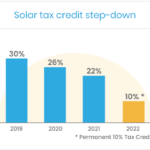
As companies ask their employees to work from home more, residential energy usage is on the rise. In comparison to 2016-2019, residential electricity usage in 2020 has increased by 10%, commercial electricity usage has decreased by 12%, and industrial electricity usage has decreased by 14%. Particularly, this has been the case in the most densely….








